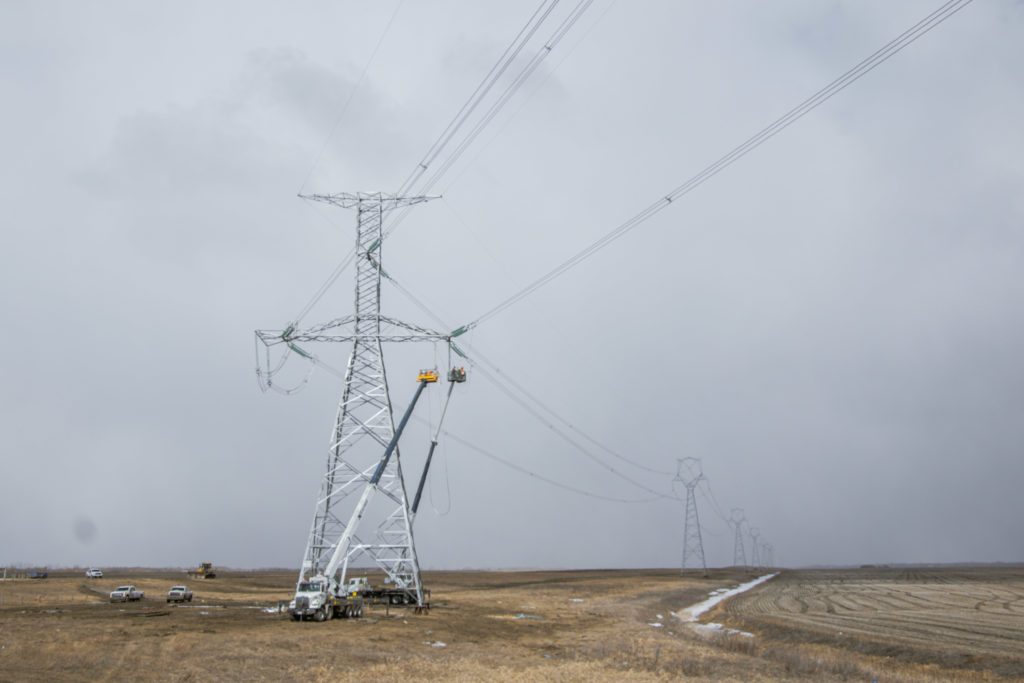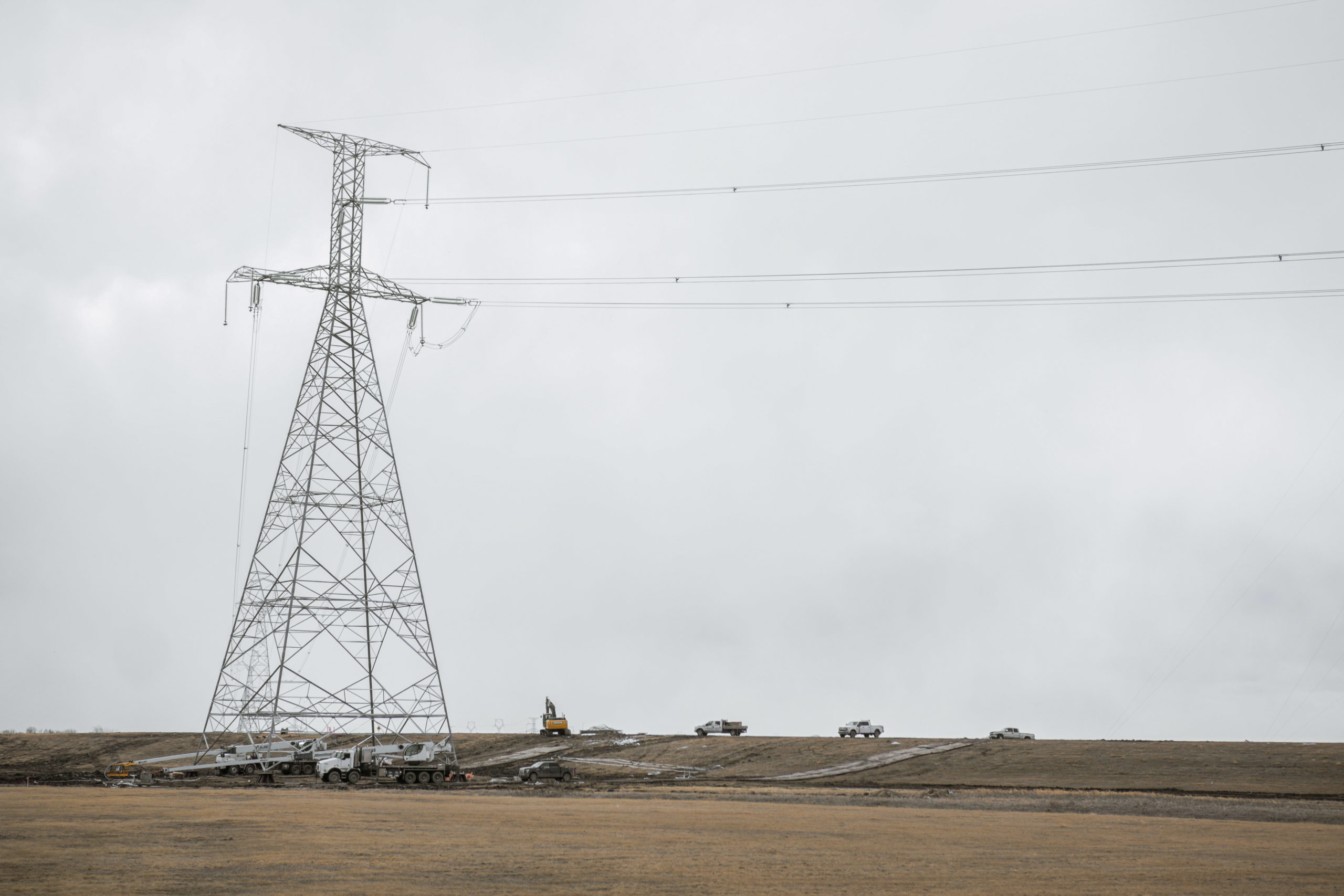By Emily Unger
When I first heard the loud booming sound, I was startled, but didn’t think much of it. I figured there was ongoing construction nearby, and that it wouldn’t happen again. It was similar to that of a gunshot but echoed louder and lingered for longer. It was a sound like I had never heard before.
The sound was repetitive over the next few days, and it was a topic of discussion amongst my neighbors, leading us to wonder what was going on. Helicopters floated across the sky, hovering low for many days. The silence of our suburb on the outskirts of the city had been broken by unusual events. Something seemed odd. Nearly five kilometers away from us, we discovered the source of the unsettling sound.
The Manitoba Minnesota Transmission Project is a major transmission line that runs from Winnipeg to the United States, connecting power from Northern Manitoba to the United States. The 500 kV transmission line is part of Manitoba Hydro’s integrated system, connecting the south to hydro power from northern Manitoba, where the power is generated. While the transmission line is expected to create revenue through selling hydropower to the United Sates, many concerns have arisen for Manitobans on both the financial and environmental consequences of these projects.
Part of the development of the transmission line involves fusing two lines together using a method involving implosion sleeves. As described on Manitoba Hydro’s website, “An implosion sleeve makes a loud noise and flash similar to a firework. If you hear or see one, it’s probably just us.”
Although these sounds are short and only involved in the construction of the line, they take place down the entire length of the line. The implications of these sounds on wildlife habitats and human health and wellbeing are large, invoking fear and a sense of danger. Although these aren’t the only implications caused by the transmission line. Other environmental implications include the use of herbicides, damage to plant and animal habitats, and plant species removal.
While residents of northern Manitoba face some of the highest rates for hydropower, Americans are provided low cost energy. We must ask who faces the burden and who receives the benefits of hydro development, and reconsider how ethical energy is, and at what cost.
Manitoba Hydro provided minimal consultation to all parties affected by the project. They invited 25 of 63 First Nations in Manitoba to a hearings process in 2018, and did minimal consultation with non-First Nations residents. The majority of Manitobans were left out of decision making processes on the transmission line, and were poorly informed, if informed at all, on the work and impacts of the line.
As an urban resident, I have the luxury of receiving hydropower at a low cost, and facing few impacts of hydro development. However, although it barely scratched the surface, this experience provided a small glimpse into the reality that northern Manitobans disproportionately face when it comes to hydro development. This story seems all too familiar, with publicly owned corporations operating in a ‘business as usual’ mindset, having little consideration for the needs and desires of the people who line their pockets. It is time we start questioning where our hydropower comes from, the implications it has, and who Manitoba Hydro is really operating in the best interest of.
For more information on MMTP, Manitoba hydro, and hydroelectric development, please check out the following resources:
https://www.cer-rec.gc.ca/pplctnflng/mjrpp/mntbmnnst/index-eng.html
https://www.hydro.mb.ca/projects/mb_mn_transmission/
https://dev.hydroimpacted.ca/2018-national-energy-board-hearings/
https://dev.hydroimpacted.ca/1-community-stories/




